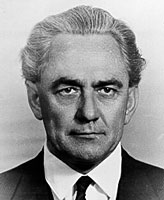Expanding Earth
[2][3][4][5][6] In 1834, during the second voyage of HMS Beagle, Charles Darwin investigated stepped plains featuring raised beaches in Patagonia which indicated to him that a huge area of South America had been "uplifted to its present height by a succession of elevations which acted over the whole of this space with nearly an equal force".
In 1835 he extended this concept to include the Andes Mountains as part of a curved enlargement of the Earth's crust due to "the action of one connected force".
Not long afterwards, he abandoned this idea and proposed that as the mountains rose, the ocean floor subsided, explaining the formation of coral reefs.
Together with British geologist Arthur Holmes, Joly proposed a hypothesis in which Earth loses its heat by cyclic periods of expansion.
[11] In 1888 Ivan Osipovich Yarkovsky suggested that some sort of aether is absorbed within Earth and transformed into new chemical elements, forcing the celestial bodies to expand.
After initially endorsing the idea of continental drift, Australian geologist Samuel Warren Carey advocated expansion from the 1950s (before the idea of plate tectonics was generally accepted) to his death,[17] alleging that subduction and other events could not balance the sea-floor spreading at oceanic ridges, and describing yet unresolved paradoxes that continue to plague plate tectonics.
[19] Bruce Heezen initially interpreted his work on the mid-Atlantic ridge as confirming S. Warren Carey's Expanding Earth Theory, but later ended his endorsement, finally convinced by the data and analysis of his assistant, Marie Tharp.
This caused German physicist Pascual Jordan to propose in 1964, a modification of the theory of general relativity, that all planets slowly expand.


